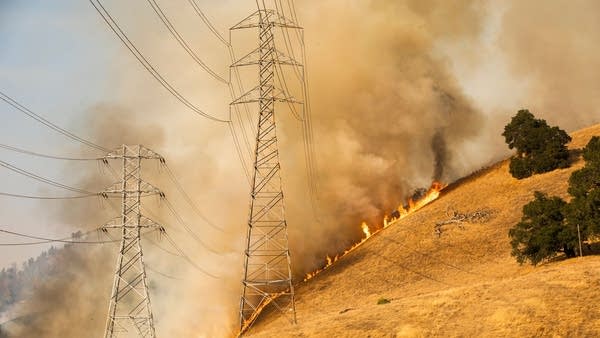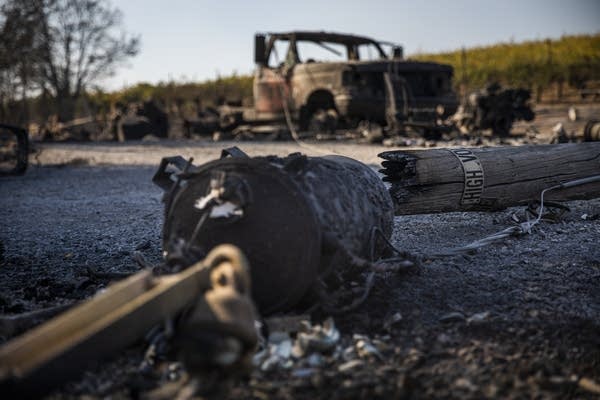But there’s tension between California communities wanting self-reliance and big utilities, says David Roberts of Vox.

There is, for the moment, a brief respite in California from blackouts imposed by the state’s biggest utility, PG&E, and dangerous fire weather. But it’s temporary, and climate change means this is the new normal.
PG&E has said it could take a decade to upgrade its infrastructure so it’s less likely to spark deadly fires. On Thursday, the utility reported a $1.6 billion loss in the third quarter related to fire charges. A group of California mayors think PG&E should be turned into a publicly owned cooperative utility.
But what if the answer is just to get off the grid or for utilities to split up into lots of smaller microgrids? That’s the topic for this week’s “Quality Assurance.” I spoke with David Roberts, who covers climate change and energy for Vox. The following is an edited transcript of our conversation.
David Roberts: A microgrid is a little miniature grid that can, at least temporarily, cut itself off from the larger grid in the case of a blackout or something like that. There can be lots of different resources within a microgrid — there can be rooftop solar panels on homes or businesses, there are home batteries, the Tesla Powerwall — it basically becomes a miniature utility of its own. There are communities in California installing these things already because they have a lot of benefits even outside of emergency power. Obviously now, the interest in these things is spiking in California, and you see lots of solar companies and battery companies just being inundated with requests for this stuff.
Molly Wood: What’s the long-term business impact of that? If you start to see this grid defection at a high level, whether it’s individuals or entire communities, does that really reduce reliance on the utility, and frankly, could it weaken it even more?
Roberts: Yes. The basic tension here is that investor-owned utilities like PG&E make their money by investing in things. They invest in grid infrastructure, and then they get a guaranteed rate of return on those investments. Naturally, they want to invest in grid infrastructure — that’s where they make their bones. But microgrids and local power reduce reliance on this big, centralized grid, which puts them directly at odds with the financial interests of investor-owned utilities as currently constituted. We’re in this situation now where the interests of California communities in becoming more self-reliant, in terms of electrical power, is just structurally at odds with the interests of the big utility, and that tension needs to be resolved.
Wood: Are there existing utilities or states or cities that you know of that have that structure? That are more open to this microgrid and/or different compensation structure idea?
Roberts: This conversation about investor-owned utilities and how to restructure their incentives is going on all over the country. This is a huge, hot topic in the energy world, even before this. It’s interesting to come out in the open and watch the public start to engage in it. But yes, it’s called performance-based regulation — PBR is the acronym. The whole idea is you tie compensation to performance metrics, like how much renewables you have integrated, or how much heating you have electrified, and the utility performs against those metrics and has variable compensation depending on how it’s doing. There are experiments in that going on in New York and in Massachusetts and other states. It’s not a completely new thing, but California, for all its reputation as a cutting-edge state, in terms of its utility and its utility structure, it’s very old fashioned, it’s very behind the times in these things. It would be a scramble to do it now.
Wood: Can technology help here? Could Apple use some of its hoard to create a really good-looking home solar battery storage, energy storage system?
Roberts: There are very sophisticated systems available now. What’s needed now is just bulk, which drives the cost down. We need the market to be able to scale up, and then efficiencies of scale will set in naturally. That’s where California could step in right now, just set a couple of billion dollars aside for subsidies for vulnerable and low-income homeowners to afford these systems. That seems to me like a no-brainer, the very first thing California should do.

David Roberts has a piece in Vox from late last month with more details on distributed energy and what that might look like in California and elsewhere.
A story in the Seattle Times on this same topic says even PG&E agrees that microgrids are the way forward, but not anytime soon. The company is investing in just a few projects so far, but as Roberts mentioned, cities and utilities are launching projects all over the United States — Washington state, Cleveland and New York.
In researching this story, I think I found my new favorite resource on this topic — the site Microgrid Knowledge.